|
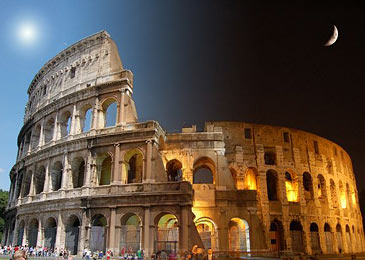
The Colosseum (half in the day, half in the night). Also known as the Coliseum or the Flavian Amphitheatre. It was constructed betwen 70-72 AD and could seat 50,000 people.
|
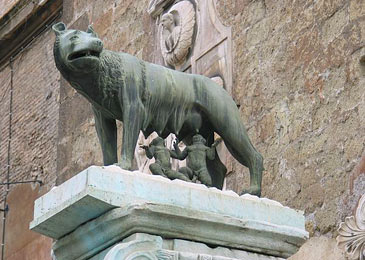
A statue of Romulus and Remus and the Capitoline Hill. According to mythgology, Romulus and Remus were feral children who were brought up and suckled by a she-wolf. They went on to found Rome, and in Cleopatra’s Daughter, Marcellus references the myth of how Romulus slew Remus.
|

Outside the Colosseum |

The Pantheon, built by Marcus Agrippa, burned down in 80 AD and had to be rebuilt under Hadrian’s reign in 125. He included the orignal inscription which read, Marcus Agrippa, Lucii filius, consul tertium fecit meaning, Marcus Agrippa, son of Lucius, consul for the third time, made it.
|

The stairs leading into the Mamertine Prison (aka The Carcer or Tullianum). One of Juba’s ancestors, Jugurtha, was kept here after being paraded in the Triumph of Gaius Marius.
|

The Pantheon, built by Marcus Agrippa |

The Mamertine is the underground cell where Saint Paul, Saint Peter and even Vercingetorix (the king of the Gauls who was defeated by Caesar) were held until executed. Although there’s a shrine in the photo depicting scenes from the Bible, it isn’t a church. I was surprised to find the cell empty when I visited. Not many people seemed to be visitng, although it was the site of some of the most world-altering events in history. |

The famous dome inside the Pantheon. It is the oldest domed building in Rome. |

A plaque and oil lamp on the cell’s walll commemorate some of the events which took place inside. |

Inside the Pantheon, which was converted into a church. |

The empty cell. A frightening place to be, I would assume, when the lights were extiniguished and no air was let in. |
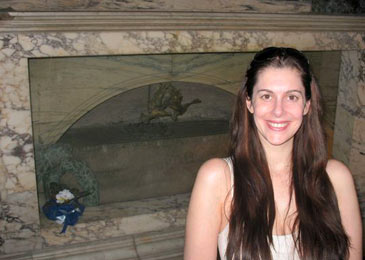
The artist Raphael is buried inside the Pantheon. If you look closely, you can see his coffin. |

Overlooking the Forum. |
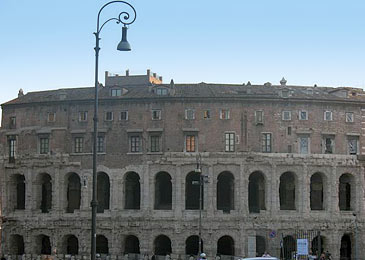
Marcellus’s Theatre was built by Octavia in honor of her dead son. |
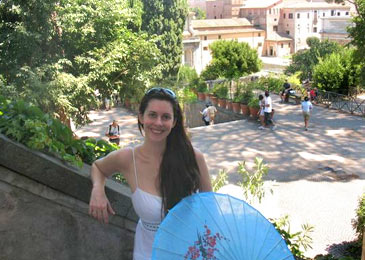
While sightseeing in Rome, many toursits take umbrellas. Although I turned up my nose at buying one, I was desperately chasing down a vendor after a few hours in the brutal sun! |

As Cleopatra’s Daughter: A Novel recounts, the Theatre was built in three layers, the first with Doric columns, the second with Ionic, and the third with Corinthian. |

The House of Augustus on the Palatine was opened for public viewing in 2008. |

A local cafe is named in honor of Marcellus and his Theatre. |

A few frescoes remain in Augustus’s villa. Although they’re significantly damanged, the colors are still vibrant. These frescoes would have been familiar to Queen Cleopatra’s twin children Alexander and Selene, who lived on the Palatine next to Augustus’s villa for at least four years after their mother and father’s suicide. |
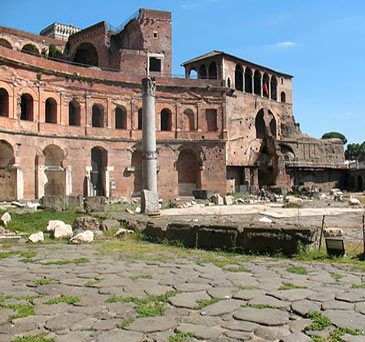
The remains of Tajan’s Marketplace |
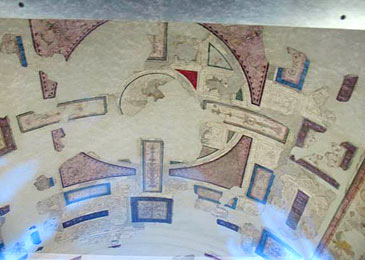
Augustus’s villa. |
 |

The villa’s ceiling. |
 |

The frescoed walls. You’re not allowed to take flash photography inside the villa, so unfortunately, many of the photos I took came out blurry. This was the best I could do! |

What the market used to look like. |
|
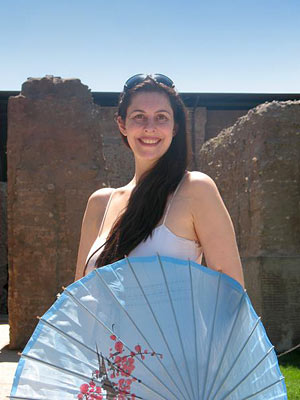
Outside the villa. |

Trajan’s famous column near the Quirinal Hill was finished in 113 AD and is engraved with scenes from his victory in the Dacian Wars. There are more than 2500 figures on the column. |
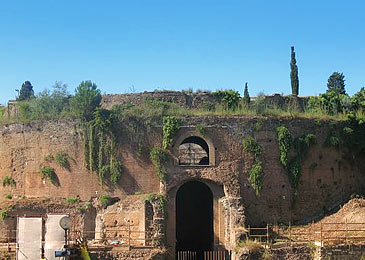
Not much rermains of Augustus’s mausoleum in Rome. |

On top of the Quirinal Hill. |

